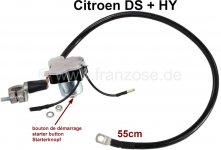ahh!! didn't know that - learning all the time thanks David... but, but , but the bridge strap on the starter for the solenoid is cut when the remote solenoid is used. If you delete the remote solenoid and change the wiring, you have to reinstate the bridge strap.
Cheers
Chris

